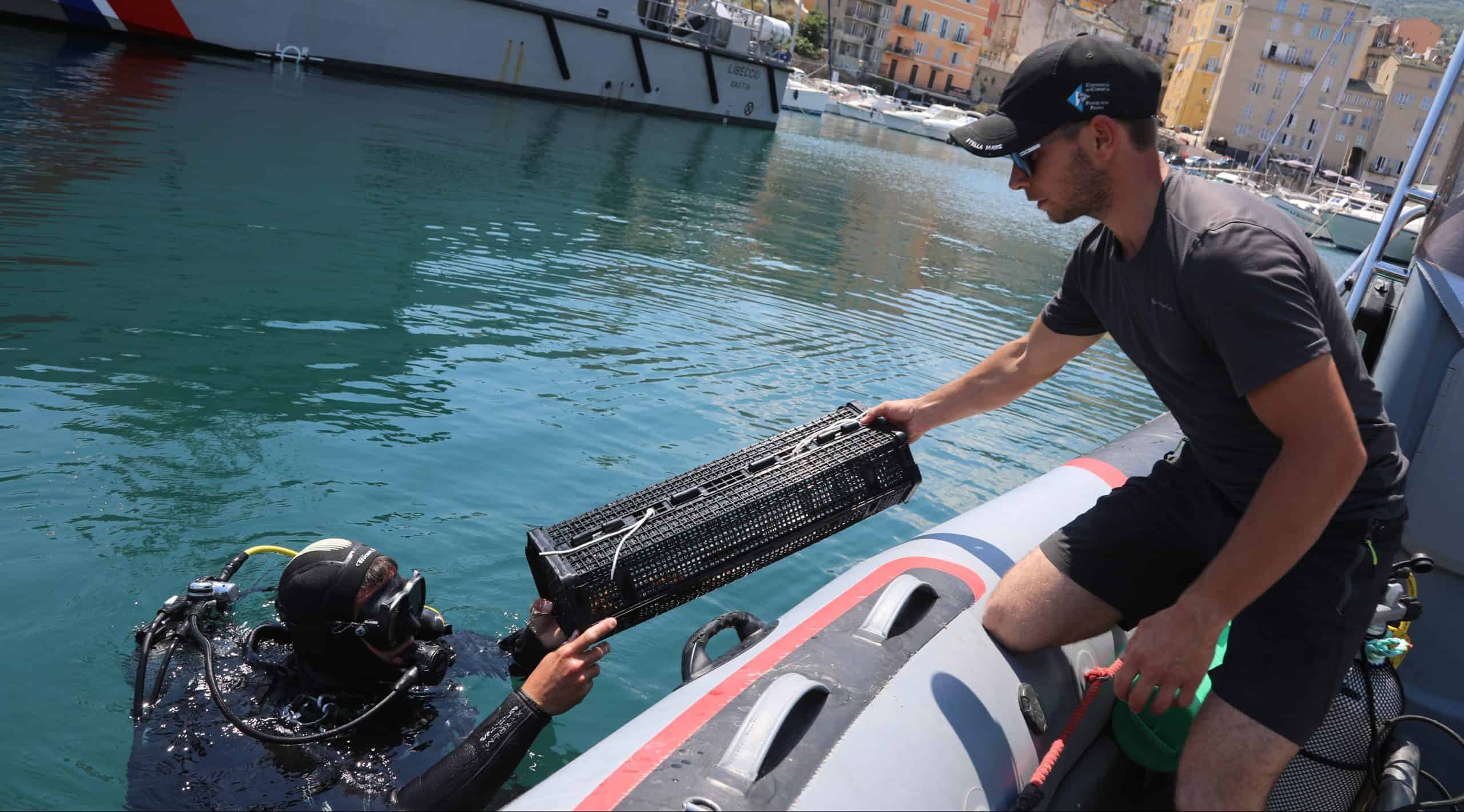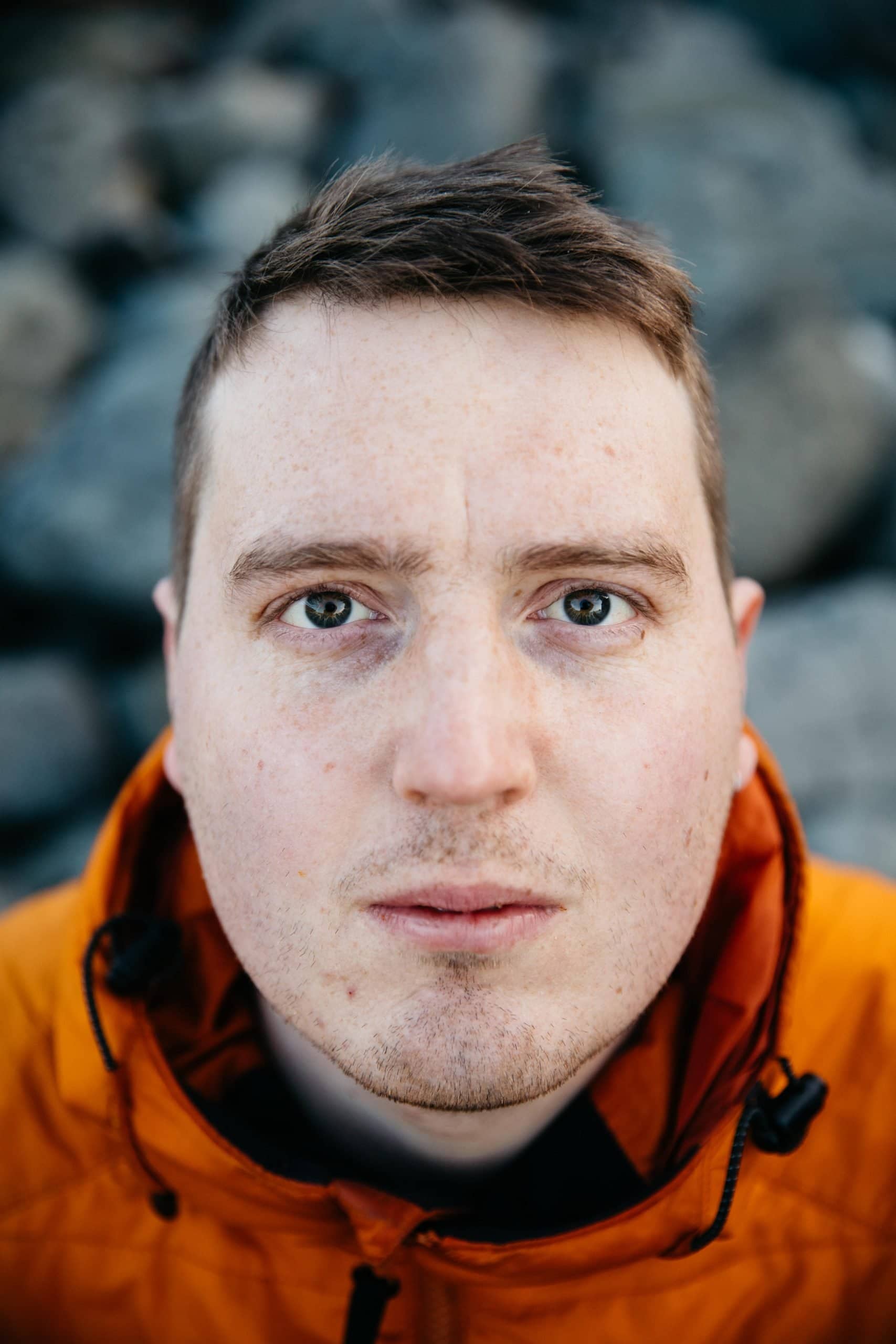The water beneath our boat is teeming with life. It is a fine Sunday morning on Loch Slapin on the Isle of Skye, and Dr. Judith Brown and Andrew Airnes are pointing below the surface to where they are hoping to grow more than 100 metric tons of high-quality animal protein suspended from four ropes.
“You probably wouldn’t be able to grow one sheep on that land-wise,” says Airnes. Due in part to its tremendous efficiency, mussel farming is seen by a new generation of food producers as having exciting potential for feeding a growing population while restoring native biodiversity, which has been damaged or destroyed by pollution and harmful fishing practices.
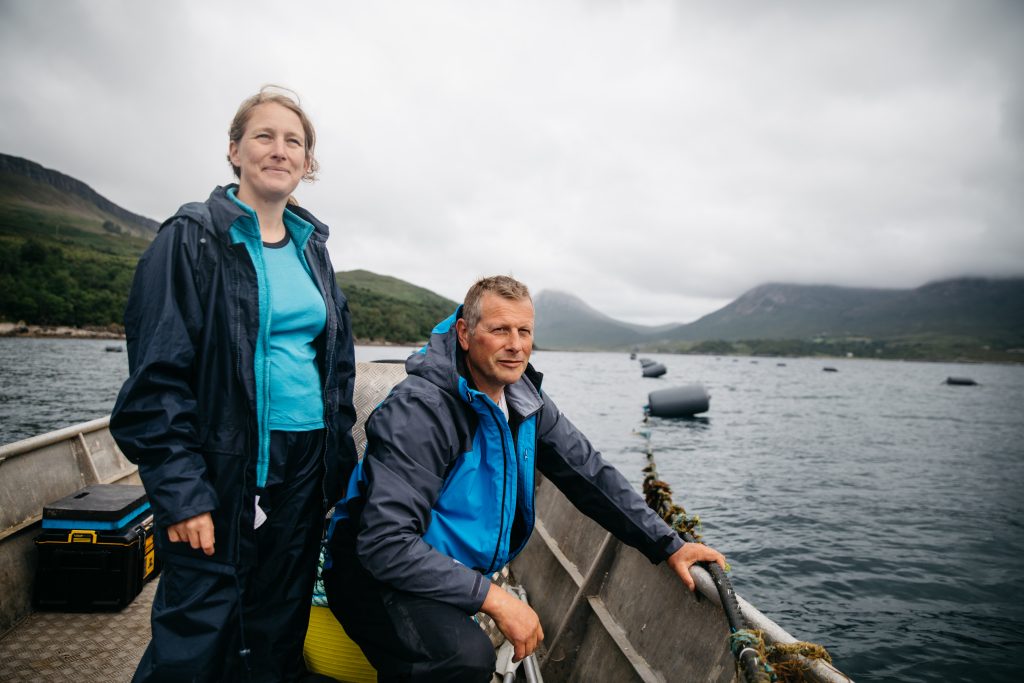
“Mussel farming with suspended ropes creates a marine habitat, an ecosystem which is permanent. All you do is rotate the ropes so there is always the habitat there. It ups biomass by 3.6 times and biodiversity by 1.6 times,” says Airnes.
Mussels attach to whatever substances they can find in the water, in this case four 220 meter-long doubleheader ropes, explains Brown. “When they are very small, they release spat [juvenile mussels] that stick to things hanging in the water. Effectively, mussel farming is providing the substrate that they would naturally stick to.”
Aside from maintaining the ropes and redistributing the mussels to spread them out when they are young, there are no further inputs — unlike almost all other methods of farming. The mussels simply grow at their natural density without the need for additional food, water or treatments.
John Holmyard at Offshore Shellfish, the UK’s first fully offshore rope-cultured mussel farm off the Devon coast, describes it as “like going from a plowed field and into a forest.”
“The mussels on the lines are providing a habitat for everything else. There are loads of things that live between and on the mussels. They might just be tiny little worms or molluscs … [or] huge numbers of fish. Last year, we even had bluefin tuna in the farm chasing the mullet, which chase the crustaceans, which feed on the sludge that lives on the mussels.”
Dr. Emma Sheehan, associate professor of marine ecology at Plymouth University, has been working with Holmyard since 2013, studying the farm’s ecological effects. “We are really interested in trying to understand how the mussel farm interacts with the whole marine ecosystem over time,” she says.
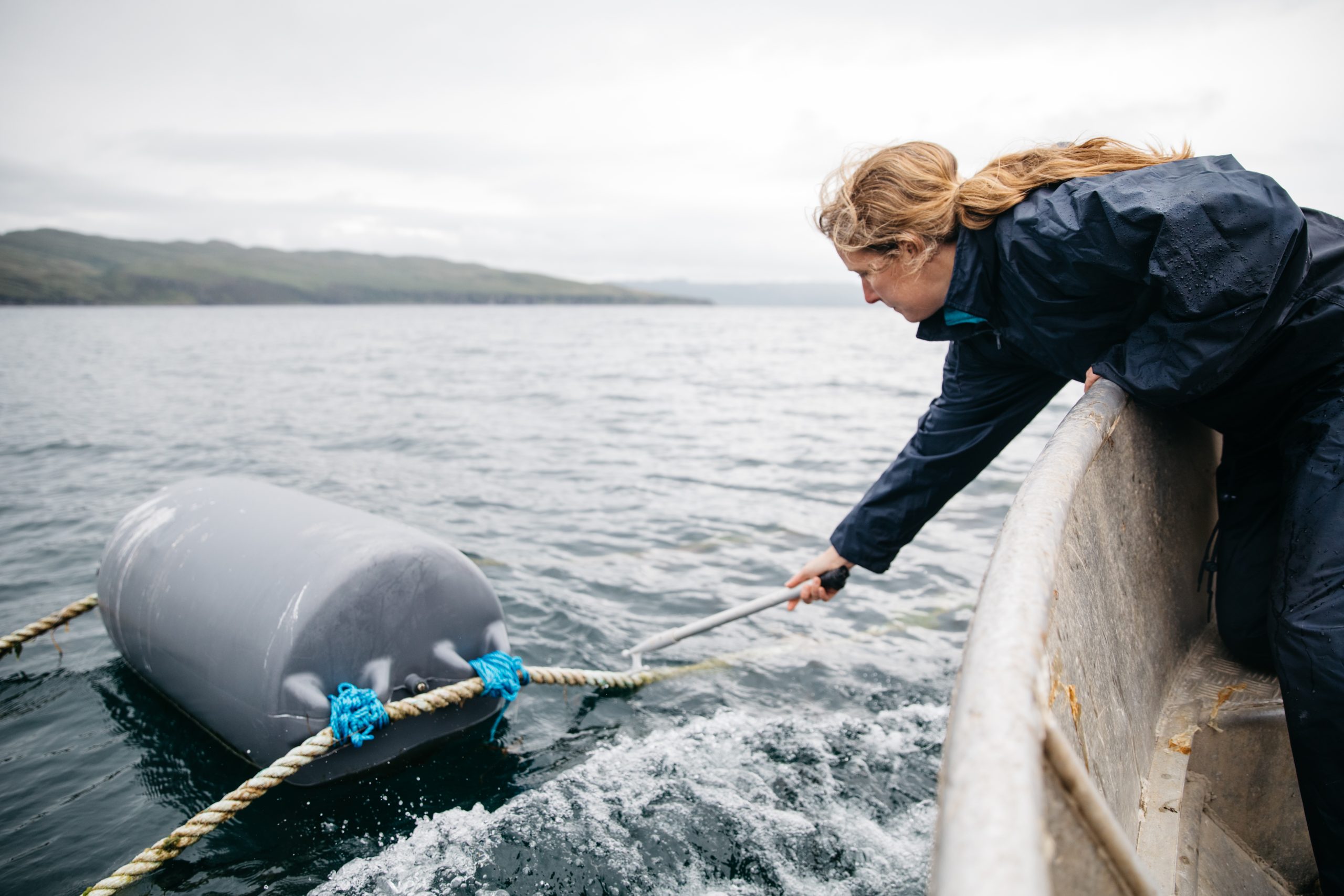
“When we first got there, the seabed was completely dredged, a classic scallop-dredged ground. There were species there — lots of scavenging species — but the diversity was very low.”
“We have found [the farm] is providing a settlement for all sorts of species: hundreds of thousands of brown crab, scallops and all those kinds of species which might be habitat lacking. Certainly within the water column, every year we seem to see another species using the nets to feed and aggregate around.”
PhD students Danielle Bridger and Llucia Mascorda Cabre are collecting data from the farm and comparing it with nearby control areas in Lyme Bay. “After eight years, the overall diversity and abundance of mobile species had increased by a third within the farm compared to the control areas,” says Bridger.
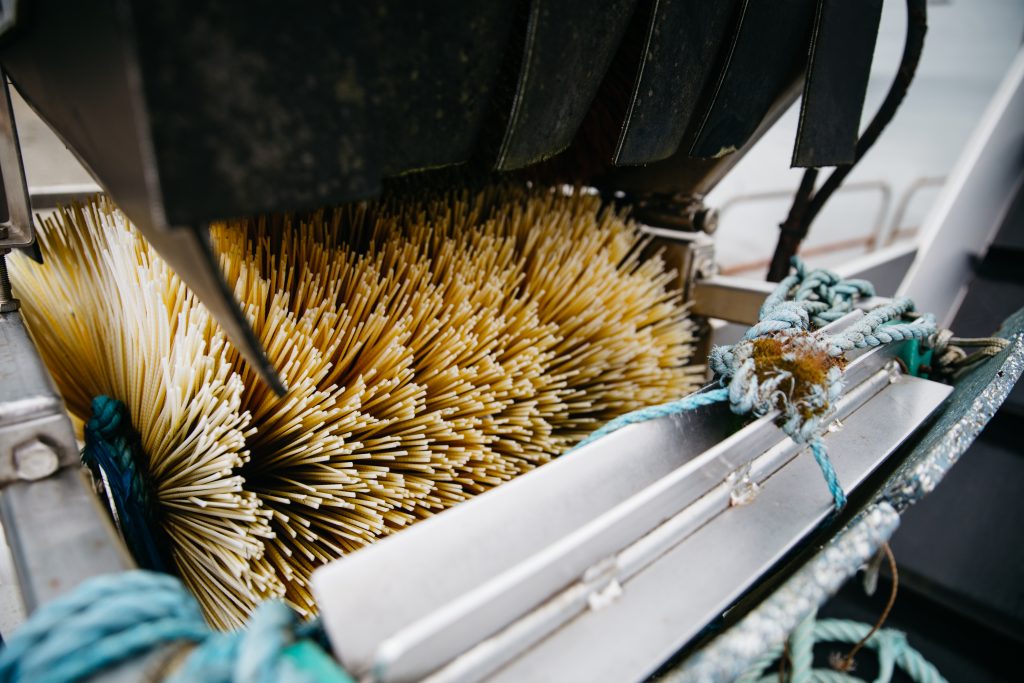
Though it is early days on Skye, Brown and Airnes say an inspection of their ropes reveals a thriving and happy food chain, from top to bottom. “Suddenly you have the whole trophic system… you have the bigger fish right up to sharks and right down to micro molluscs. When we are diving and checking the sites, we have seen big shoals of pollack, lots of wrasse, shrimp and lumpsucker. We have seen small-spotted cat sharks around the sites. Suspended mussel ropes create that habitat,” says Brown.
As well as providing food, shelter and structure for other marine life, mussels play an important role in improving the overall quality of the water. It has been estimated that each mussel can filter 25 liters of water a day. “They feed on nutrients and reduce eutrophication [excessive plant and algal growth]. They keep the water nice and clean for everything else,” says Airnes.
On the west coast of Scotland, much of the water has grade-A status, but large swathes of the UK’s coastline are heavily polluted. Sheehan believes mussel farms can go some way to reinstating habitats and natural filtration that would have existed before industrialized fishing.
“Imagine the whole of the seabed covered with oysters or mussel reefs, which were filter feeding the whole time and filtering the water of organic and inorganic matter; because of years and years of bottom towed fishing, we have just lost them in huge areas. We think this is replacing lost services,” says Sheehan.
Growing meat vertically in the water column also raises exciting possibilities for alternative land use and a solution to the nutritional demands of a growing global population. A recent paper notes: “There is no requirement for feed or antibiotics for mussel cultivation, and the GHG [greenhouse gas] emissions associated with suspended mussel production are a fraction of that associated with producing terrestrial meat or even farmed salmon.”
The paper estimates greenhouse gas emissions of 0.6 CO2e/kg (carbon dioxide equivalent per kilogram) of edible product for blue mussels compared to between 19 and 36.7 CO2e/kg for beef. “If we could start taking in more mussel protein rather than some other proteins which have more issues with producing carbon, it would be much better for the environment,” says Sheehan.
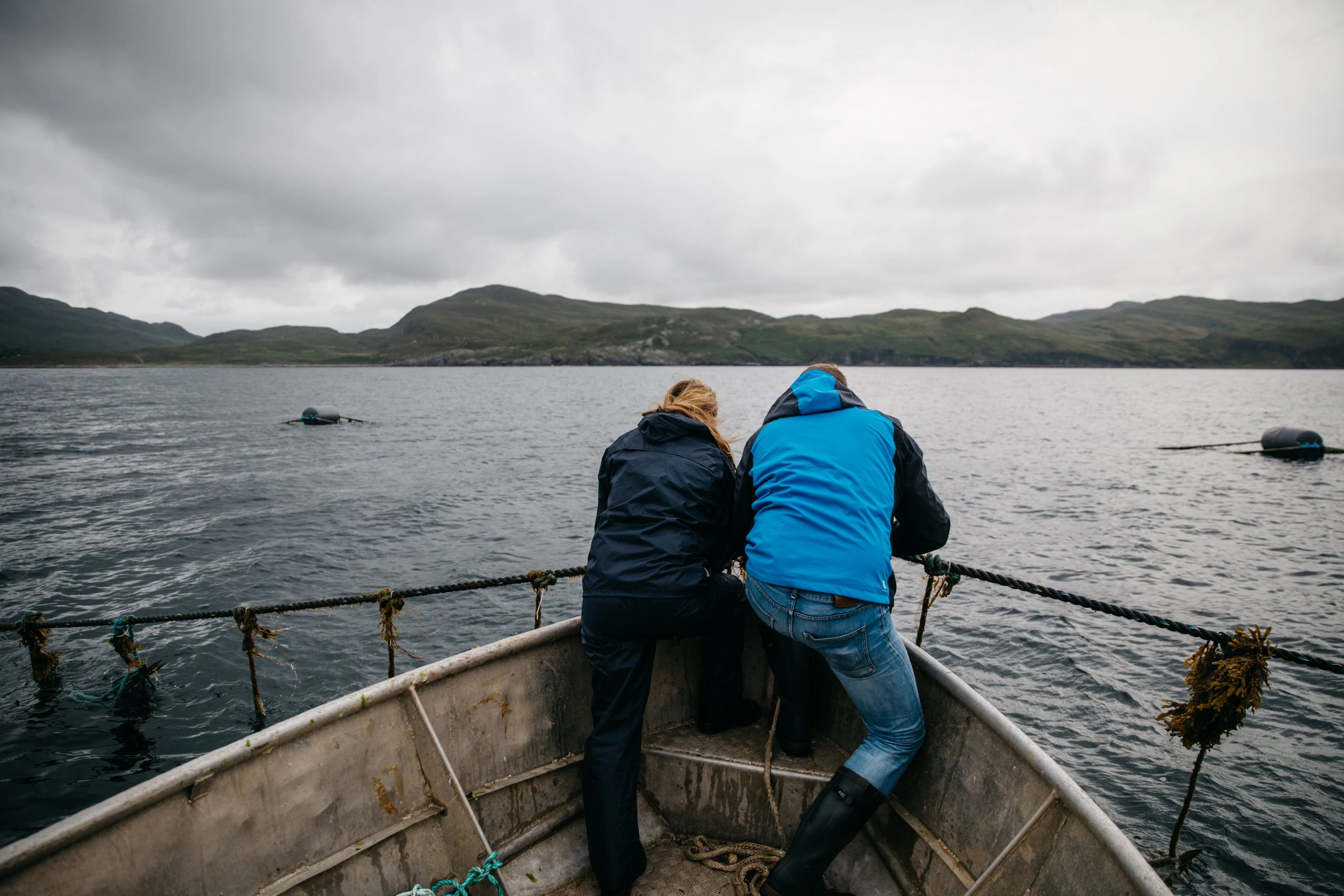
She is, however, cautious about encouraging a proliferation of mussel farms. “Everything is always about scale. We certainly wouldn’t say that you can just farm everywhere and anywhere and it would all be great … We are still introducing physical structure at sea, we definitely still want areas that are not full of human structure and are open. It’s just finding a really good balance where we can still grow these amazing mussels for food and benefit from the marine ecosystem services that they provide.”
As ropes of healthy, juvenile mussels are pulled from the crystal clear waters around Skye, small brown crabs scuttle along the lines before dropping back into the water. Overhead, a golden eagle soars, and cormorants dry their wings on the grey floats that keep the ropes suspended in the water. Holmyard later tells me: “We don’t pretend for a second that what we are doing is a natural thing but it’s a pretty good simile for it.”
A version of this article originally appeared in The Guardian.





